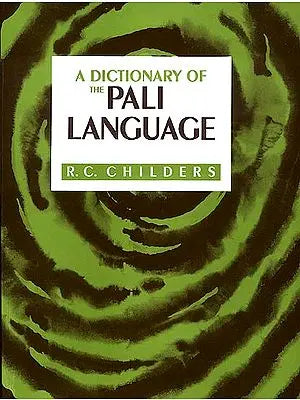A Dictionary of the Pali Language
A Dictionary of the Pali Language
Hardcover
Couldn't load pickup availability
Book Description
The Buddhist Scriptures are called Tripitaka, "The Three Baskets or Treasuries," and are divided into Vinaya, Sntra and Abhidharma, or Discipline, Doctrine I am Metaphysics. The Vinaya Pitaka contains the laws and regulations of the Buddhis priesthood, and forms a great code of monastic discipline; it is besides rich in history- and folklore, and contributes innumerable details of the life and ministry of Gautama The Sutra Pitaka consists chiefly of sermons preached by Gautama, and in some in. stances by his apostles," but it also contains other matter, as the Jataka tales, the Niddesa attributed to the apostle Sariputra, and Theragatha" a collection of stanzas uttered on different occasions by eminent saints. In the Abhidharma we find metaphysics pressed into the service of religion: it introduces no new dogma, but discusses the various doctrines of Buddhism from a metaphysical point of view, employing a terminology of great wealth and precision." The Three Baskets form a canon of Holy Writ, and art invested by the Buddhists with all the sanctity of a canon. They are reverenced as containing the Word of Buddha, and are the ultimate appeal on all questions of belief aid conduct. Owing to their great extent, estimated at eleven times that of our own Bible, they are able to treat in great detail of all the relations of life, and the doctrine they contain is consistent throughout and set forth with clearness and logical accuracy.
Upon the important question of the origin of the Buddhist Canon much has been written, and the most conflicting opinions have been expressed. The time has hardly come for dogmatising on this subject, but the tendency of all recent discoveries is to confirm the Buddhist traditions, which assign to the Canon a venerable antiquity. The Tripitaka bears every mark of recension, and according to the Buddhist historians this recension dates from the 3rd General Council of Buddhism, held under the emperor Asoka in the year 309 before Christ,' But even this is said to be a mere revival of the first recension which was made in B.C. 543, just after Gautama's death, when his words were fresh in thc hearts and memories of his apostles.' These high pretensions have drawn down, as was inevitable, the ridicule of many Western scholars," more than one of whom has held the Buddhist sacred books to be late compilations, scarcely even reflecting the teaching of Gautama. But the question has been placed on an entirely different footing since the discovery last year by General Cunningham of the Bharhut sculptures. These sculptures, which belong to the third century B.C., are illustrations in bas-relief of a great number of Buddhist scriptural subjects, and are accompanied by inscriptions in the Asoka character. Both illustrations and inscriptions are, so far as they have been identified, in perfect accord with the Buddhist Scriptures as we now have them, and in one instance a whole sentence, containing a remarkable expression, which is probably a is quoted from the Vinaya Pizaka.
Next in importance to the Tripitaka books are the Commentaries of Buddhaghosha, the history of which is a singular one. When the great missionary Mahendra went to Ceylon in B.C. 307, he carried with him not only the Tripitaka but the Arthakatha or Commentaries,-a whole literature, exegetical and historical, which had grown up around the Tripitaka during the two centuries and a half that had elapsed since Gautama Buddha's death. After accomplishing his mission of converting the island to Buddhism, he proceeded to translate these commentaries from Pali into Sinhalese, and his Sinhalese version continued to exist in Ceylon for many centuries, while the Pali version disappeared. In the fifth century Mahendra's Sinhalese commentaries were retranslated into Pali by the famous divine Buddhaghosha, one of the most extraordinary men that Buddhism has produced, and this third version is the one we now possess, the Sinhalese original having in its turn disappeared. Buddhaghosha did not confine himself to translating Mahendra, but incorporated other old Sinhalese chronicles existing in his time, and added immense contributions, chiefly exegetical, of his own. Much of the matter his commentaries contain is as old as the Tripitaka itself, while like the Tripitaka they are rich in history and folklore, and abound in narratives which shed a flood of light on the social and moral condition of ancient India.
Share


